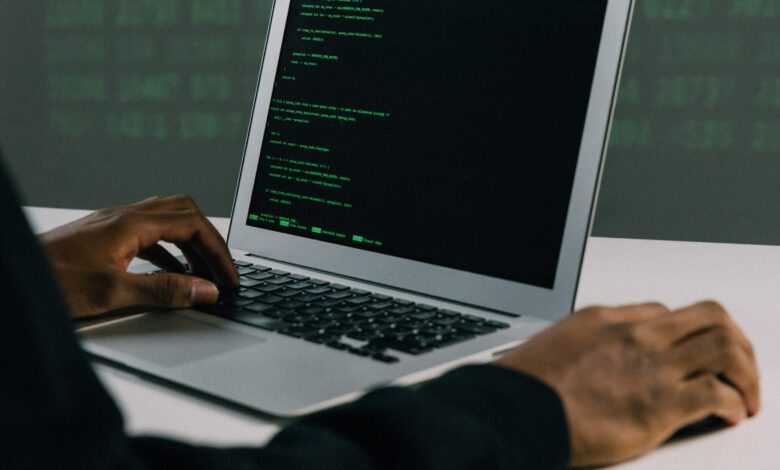Types Of Cybersecurity Explained – Forbes Advisor INDIA

India has the world’s one of the largest users of information technology infrastructures, particularly mobile and Wi-Fi internet, as well as telecommunications, due to increasing penetration of smartphones, tablets, laptops, and desktops. Some users even need an upgraded computer system for gaming, or mining bitcoin, per se. There are embedded chips, microprocessors, and computer control systems used for electrical, mechanical, and monitoring functions, and likewise.
Featured Partner
Price Per Year
INR 1,199 per year
Featured
Protection for PC gaming, Device & Online Security
Price per year:
INR 799 to INR 2,199
Additional Features
Email security & ransomware protection
Hence, cyber hygiene relates to all users connected on the communication network infrastructure, digitally or through technology means. It is best to start with safeguarding sensitive and critical information or personal data from being stolen, misused. Cyber threats are many and are evolving, from a threat of losing money due to negligence in storing online banking passwords to computer virus, malware, or spyware attacks, which occur mainly due to exposed cybersecurity vulnerabilities.
That said, there are plethora of cybersecurity products and solutions available, be it for your house Wi-Fi security to work from home, and the IT security required by enterprises, governments, and others. A chief technology officer would agree that their IT departments should have well-prioritized cybersecurity systems in place and tech-savvy professionals. Similarly, a work-from-home employee may use softwares like VPN, antivirus, firewall, or install cloud security systems, to protect their personal as well as office credentials. Remember, as technology evolves so do cyber threats.
Here’s a basic guide to cybersecurity.
Major Types of Cybersecurity Threats
Some of the major cyberattacks were caused by identifiable threats, such as:
Computer Virus, or Malware
A computer virus, or malware, are hacking programs created by cybercriminals that affect your computer and files stored within the system. Such viruses can replicate, destroy files and documents, or even slow down your system. Malware is now increasingly becoming complex and new as hackers try every method to get access into the computer systems of individuals, accounts of those users with access to control, or sneak into the IT security of enterprises.
As technology advances, malware is now being designed for specific purposes. Ransomware, for instance, enters into your computer system and locks files by encrypting with an hacker-controlled key. Often meant to demand a ransom for unlocking files, ransomware is run by a crew of dark-web hackers. It has often made high-profile targets such as enterprises by sneaking into the IT system, or even defense companies to hospitals, with a motive to leak data.
Similarly, spyware is another malicious software that enters into your computing systems, especially mobile devices, to track online logins, calls, or read SMS without your knowledge or permission. Pegasus is such spyware that made headlines from around the world about its exploits spying activists, journalists, politicians, and similar profiles. Similarly there are plethora of malware such as trojan, adware, etc.
Web Hacking and Malicious Code
Websites are prone to web hacking, especially those unsecured ones collecting users personal and financial data in bulk, like ecommerce and banking sites. Web hacking also refers to an attack on any website and use it to disseminate illegal content, such as pornography. This is the reason why Google Chrome suggests web developers and online content creators of websites to enable https, or secure socket layer (SSL), in the URL to protect their as well as users’ data.
Malicious code can cause serious damage to IT security applications when hackers access the system to run malicious coding to disrupt operations, leak data, and such misuses. Once a malicious code infects your IT network, it gains access to computers, mobile, technology devices, and even Wi-Fi, and networking drives. Malicious code can also run as computer viruses and malware attacks, such as trojan, rootkit, etc.
Cyber Espionage, a.k.a Cyber Warfare
Cyber espionage, or cyber warfare, is a cyberattack in which hackers gain access to classified data through malware, phishing, and similar attacks. Popularly, cyber espionage involves using advanced persistent threat (APT) to target large enterprise and government networks, with a motive to gain access to highly sensitive data over a prolonged period. Such cyberattacks are mainly conducted to gain access to financial data, and gain political edge, or simply thwart the organization’s data and cause reputational damage.
DOS and DDOS Attack
The denial-of-service (DoS) attacks IoT-enabled applications or websites and disrupts its access to general users. The distributed denial-of-service (DDoS) takes place when thousands of IoT devices connected to multiple IP addresses are affected by DoS attacks simultaneously, and makes the application or website unresponsive or inaccessible to users.
Phishing
Such cybercrime often targets individuals with fake emails, SMS, as well as calls, to make them give out sensitive personal information—like aadhaar, pan card, banking details. OTPs, etc—and can result in identity theft and financial loss.
Cybersecurity in India
In India, the government has appointed a nodal agency, Indian Computer Emergency Response Team (CERT-In), under the Ministry of Electronics and Information Technology, to monitor cyberattacks taking place within the country. As per its analysis on cyber security incidents, it received 13,91,457 “reported” cases in 2022, from 11,58,208 cases in 2021.
Of late, IT servers of a popular hospital in Delhi were hacked and disrupted their internal operating computing system. The cybersecurity team was able to encrypt (convert information into coding) approximately 1.3 terabytes of data. Till then, however, the servers in the hospital’s IT network were left vulnerable for hackers to misuse data. Even banking institutions, oil and solar companies, have fallen prey to similar cyberattacks—leave alone the government’s own websites.
Nowadays, government departments as well as private companies have separate IT security systems and policies for internal users. It gives specific guidelines to employees, IT managers to abide by its policy on gaining access to controlling software, updates on antivirus, firewall, or using slack, trello, etc—for data protection. However, that’s not enough. Cybersecurity experts suggest adding layers of cybersecurity measures in their internal IT system and servers so that data is protected even after initial breach.
The national security council secretariat (NCSS) of India has been tasked to formulate, National Cyber Security Strategy, which is expected to address the pressing challenges facing the country’s IT security, or cyberspace. In tandem, most Indian ministries already have formulated security and data protection policies and provisions for related sectors, including industries and companies. There are National E-Commerce Policy, 2019, the Digital Personal Data Protection Bill, 2022, the Information Technology Act, 2000, to name a few.
Different Types Of Cybersecurity Products and Solutions
Cybersecurity involves practicing cyber hygiene, and that requires understanding cyber threats and running cybersecurity products and solutions. Cybersecurity measures vary among users who are working from home, for large and small enterprises to those required by banking, health sectors, as well as security required by defense.
Featured Partner Offer
Price per year:
INR 799 to INR 2,199
Additional Features
Email security & ransomware protection
Forbes Advisor analyzed cybersecurity products and solutions provided by major IT firms involved in providing infrastructure as a service (IaaS), platform as a service (PaaS), software as a service (SaaS), and listed their common offerings to suit users’ needs and requirements from cyberattacks, as follows:
Featured Partner Offer
Price Per Year
INR 1,199 per year
Featured
Protection for PC gaming, Device & Online Security
Price per year:
INR 799 to INR 2,199
Additional Features
Email security & ransomware protection
Frequently Asked Questions (FAQs)
What is the definition of cybersecurity?
A cybersecurity involves taking initiatives to protect data against malware, virus, phishing, and similar cyber threats.
How are cyberattacks performed by hackers?
Hackers use sophisticated ways to access one’s computing system via computer virus, malware, malicious code, web hacking, phishing, DOS and DDOS attack, etc.
What is an antivirus?
Antivirus is a cybersecurity software that detects malicious code, computer virus, and malware that are harmful to your device.
What is a firewall?
A firewall is an added layer of security for your IT network, including Wi-Fi, that monitors the incoming traffic and prevents unsecured, suspicious, or malicious attacks.
What is a VPN?
A virtual private network (VPN) enables users to navigate the internet in a secured connection for transferring sensitive information, as well as access blocked websites. Best VPN encrypt your data and help you anonymously navigate the internet, or conduct online activity safe from snooping third parties, and hackers.



